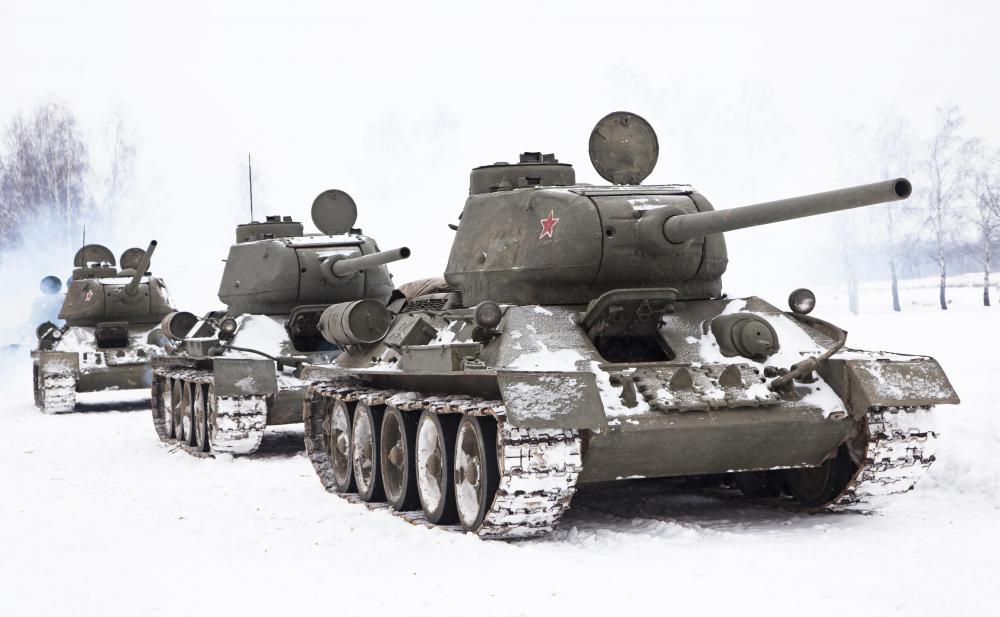At WiseGEEK, we're committed to delivering accurate, trustworthy information. Our expert-authored content is rigorously fact-checked and sourced from credible authorities. Discover how we uphold the highest standards in providing you with reliable knowledge.
What Should I Know About Hungary?
Hungary is a small country in Eastern Europe. It covers 35,900 square miles (93,000 sq. km), making it a bit smaller than the state of Indiana. The country shares borders with Austria, Croatia, Romania, Serbia, Slovakia, Slovenia, and Ukraine.
The history of human settlement in the region dates back to the Stone Age, with the earliest Neolithic settlements dating back to about 6200 BCE. The Celts moved into the area around 450 BCE, eventually settling the entire region. The region was then conquered by the Romans sometime around 35 BCE, who held on to it until the 5th century AD, when the Huns settled the region, using it as the base of their growing empire. For the next few hundred years the region would be fought over by various groups, and used as a way point for a number of migrations.

Sometime at the end of the 9th century a nomadic people, the Magyars, made their way across the Carpathians into the area. They found the Kingdom of Hungary, uniting a number of Magyar tribes into a more permanent group. Although originally practicing their own religion, the Magyars were converted to Christianity in the late 10th century, with Stephen I being crowned by the Pope himself in the year 1000. This new kingdom proved to be quite capable of defending itself, and for the next couple of centuries fought off invading nomads and Germans.

In the 13th century, however, the Mongols swept up Hungary in their ravenous expansion across Asia and Eastern Europe. When the Mongols eventually retreated a campaign was begun to build strongly fortified castles, in the event of a new invasion. For the next few centuries it remained strong, expanding its territory periodically, and losing bits now and then. For nearly two centuries Hungary fought off the Ottoman Empire, eventually losing and becoming a province of the Empire.

At the end of the 17th century the Ottoman Empire was driven out of Hungary, and the country was absorbed by Austria, becoming a part of the Habsburg Monarchy. The Habsburgs ruled Hungary harshly, leading to a great deal of dissent. Those seen as disloyal to the Habsburgs were silenced, and many of the political systems were suspended. During the wave of revolutionary zeal that spread across Europe in 1848, Hungarians rose up against the Habsburgs. The Monarchy, however, with help from the Russian Empire, crushed the uprising absolutely. For the next two decades, it was ruled even more harshly than it had been, until problems throughout the rest of the Habsburg Empire made it clear that controlling Hungary through force alone would not be a sustainable situation.

As a compromise, the Habsburgs agreed to share power in a dual monarchy, leading to the creation of the Austro-Hungarian Empire. This gave the Hungarian leaders a great deal of autonomy and power in managing Hungary, and it entered a brief period of prosperity and self-rule.
This came to a crashing halt with World War I, following the assassination of Austrian Archduke Ferdinand. Although Hungary eventually abandoned Germany and Austria, hoping to be treated fairly and given the chance to push towards greater democratic reforms, they were nonetheless treated harshly by the Entente Powers following their defeat, with much of the nation being cut off and ceded to new and existing nations such as Romania, Czechoslovakia, and what would eventually become Yugoslavia. The eventual territorial boundaries delineated by the Entente Powers were such that the prime minister resigned, and the government was essentially handed to communist leaders who suggested that the Soviet Union would help Hungary retain its lands.

Throughout the 1920s the country swayed right, and eventually led to its working closely with Nazi Germany and Fascist Italy. Following World War II, the country was occupied by the USSR, and transitioned rapidly to communism. In 1956 a student revolution against the communist government led to Soviet tanks opening fire on protestors. Communist control of the country would last until 1989, when the country began down to democratize and the Russians began to withdraw troops.
The nation has a rich past and beautiful natural wonders. Some of the most popular tourist attractions are the regions wine, the capital city of Budapest, and the 190,000 acre (76,000 hectare) Kiskunság National Park, to the 1000-year-old Benedictine Pannonhalma Abbey.
Flights arrive daily at Budapest from all major US and European cities, and rail and bus service is available from throughout Western and Eastern Europe.
AS FEATURED ON:
AS FEATURED ON:















Discussion Comments
Hungarians also gave Romanians a place to stay when the ottomans came through.
Hungary also treated the majority (more than 65 percent) of the Romanians living in Transylvania for centuries as slaves.
Also Hungary sent a lot of Jews to death during World War II.
Hungary is a landlocked country and as such Hungarians love their Lake Balaton -- the larges lake in Europe. Hungary has also produced many famous people including at least 12 Nobel prizes -- quite a large amount for a small European country.
Post your comments